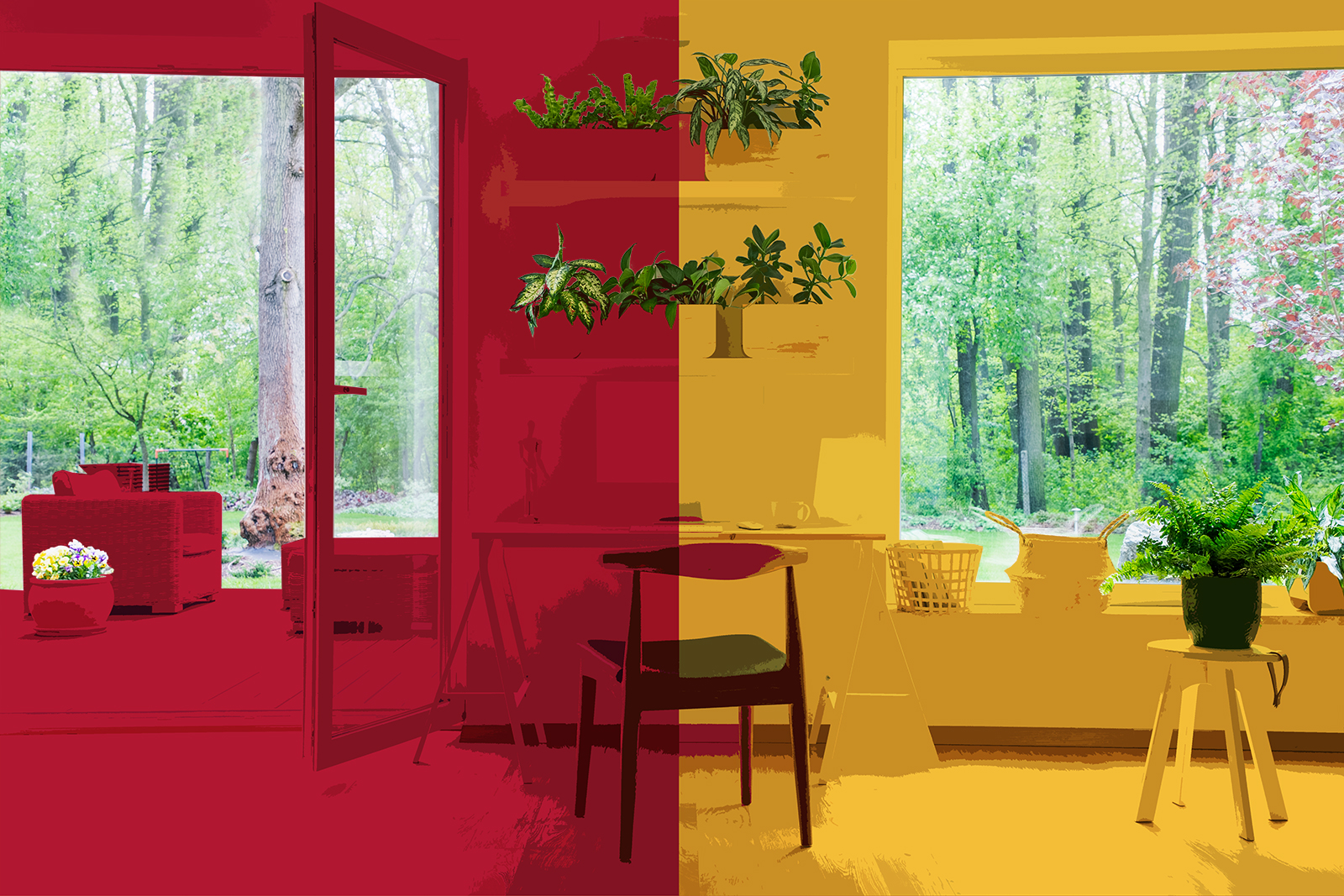How COVID is Fast-Tracking “Green” Decisions
The COVID-19 pandemic is a multi-faceted disruptor for almost every industry, upending norms and creating new ones in its wake. In the building and construction industry, this disruption is fueling the growing importance of a sustainable, healthy home, all with an eye toward wellness. That means it is crucial for building materials manufacturers (BMMs) to understand emerging trends and make their building materials marketing efforts more relevant to prospective home buyers.
The COVID Definition of Sustainability
The pandemic has heightened the homeowner’s appreciation for a more safe and responsible home living environment.
In conjunction with Dodge Data & Analytics, the National Association for Home Builders (NAHB) did a 2020 Green SmartMarket Report with input from home builders in the summer of 2020. According to home builders surveyed, energy-efficient products/systems were the most frequently asked about green product/system by homeowners/buyers, with 84% giving energy efficiency a top three ranking. Second on the list were products and systems impacting indoor air quality, with 54% of homeowners/buyers ranking it as a top 3 need. Ranked #2 in the survey, the emphasis on indoor air quality systems demonstrates that concerns about COVID are having a discernible, more long-term impact on homeowners/buyers and their mindset for a healthy home.
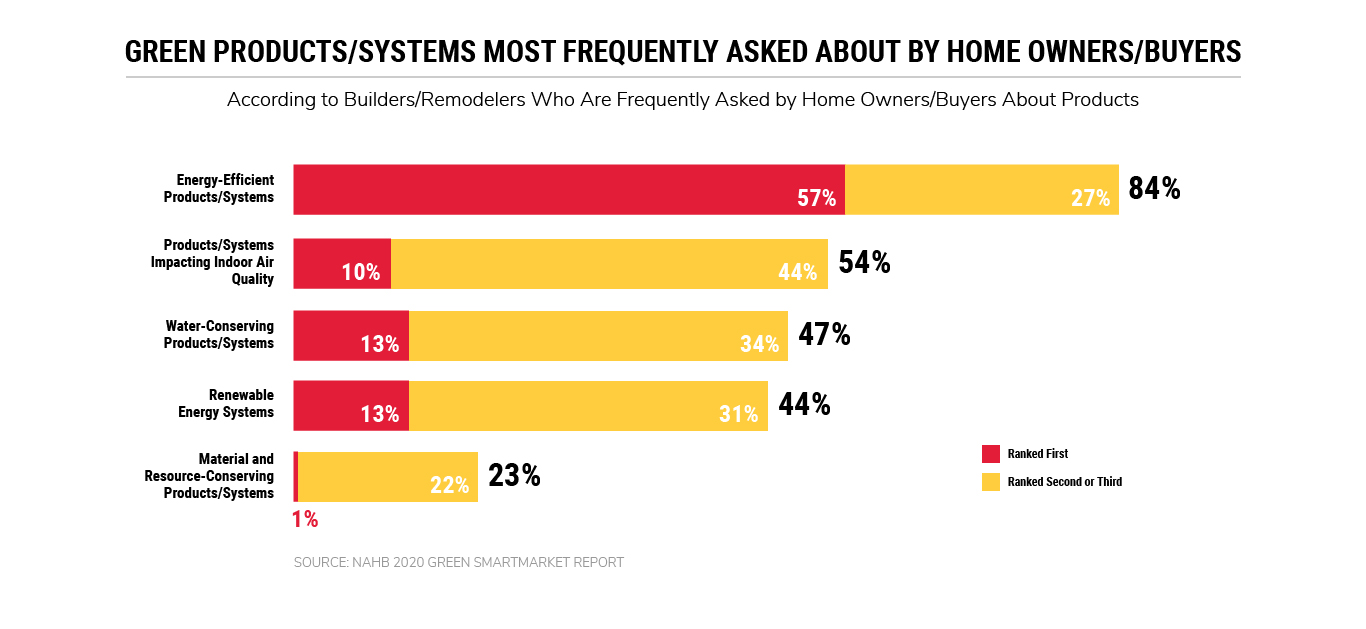
More than Just Wellness
While wellness is part of the new healthier home equation, it is really only the beginning. The home has become school, the office, the gym, and much more given the restrictions connected to COVID-19. That means shifting priorities – cleaner air circulation, a fresher coat of paint on the walls, the need to improve the outdoor space, and even expanding the footprint for a clustered family to co-exist for greater periods of time each day.
The NAHB smartly calls out Top 3 Home Qualities Customers Want for Better Living at Home. The homeowner now weighs three distinct performance components when it comes to a healthy, sustainable home – wellness, efficiency and comfort.
Wellness – Homeowners want healthy indoor environments, including better ventilation and the elimination of odors. This includes the use of low VOC materials, elimination of mold, and the desire for natural light. The main motivation here is to create a safer home environment – both physically and emotionally – using products and materials that are more natural and promote a sustainable solution.
Efficiency – While homeowners value the adoption of green products as a way to do their part in improving the health of the community, many still think first with their pocketbook in mind. Products and systems that lower energy bills – like high R-value insulation and ENERGY STAR appliances – offer tangible monetary benefits. Often, the environmental responsibilities are a secondary benefit and only if the solutions are durable, cost-saving alternatives over time.
Comfort – Spending more time in the home – often with the entire family – necessitates the need for basic comforts. It can begin at something like maintaining consistent room temperatures and eliminating drafts and can stretch to making work and learning spaces quieter with added acoustic insulation. Comfort also considers optimization of available space, like making the open-air backyard more conducive to a working environment by adding a prefabricated roof to the back patio. Such an approach also eliminates construction waste.
The Importance of Practicality
Regardless of a homeowner’s motivation, it is not enough for a product to simply be sustainable. It must be a quality solution that offers other, more practical benefits for a consumer to invest in it. The NABH 2020 Green Smart Market Report ranks the following “green” attributes that impact product selection. At the top, are the more practical considerations such as efficiency and durability. Softer attributes are ranked as far less important.
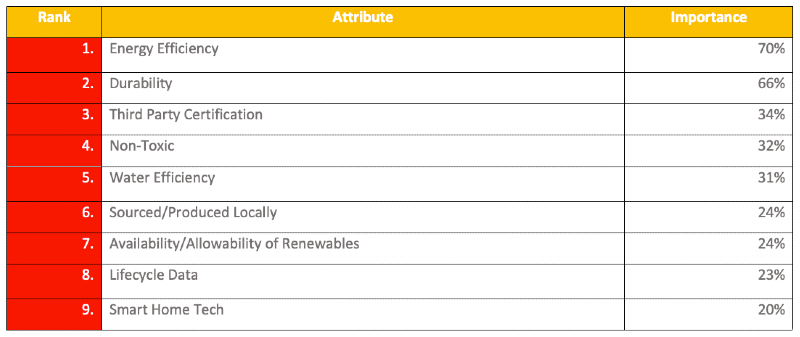
Healthier Homes Motivate “Green” Builders
Green building activity is growing amongst builders and remodelers. The NAHB 2020 Green Smart Market Report suggests that green building continues to grow, especially with new construction in both the residential and multi-family sectors. Perhaps unsurprisingly, the remodeler market is slower to adopt.
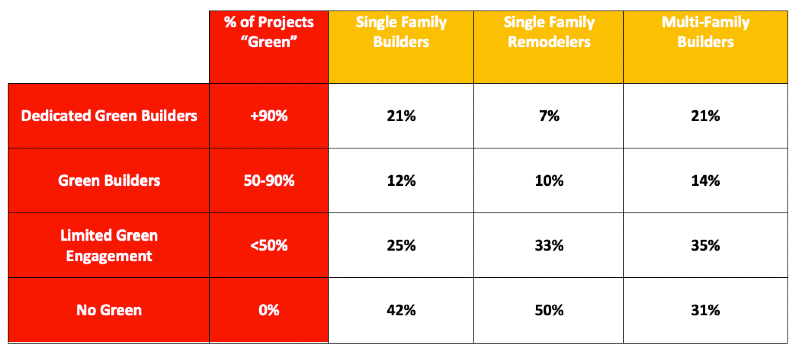
The NAHB data says that with single-family builders doing 50% or more homes with green practices, the top three reasons they build “green” are:
- It is the right thing to do (68%).
- To create healthier homes (47%)
- Reputation in the industry (42%).
This segment of single-family home builders sees the “healthy home” as both an obligation and a business opportunity. They are the “believers” who will guide more home buyers toward healthy building adoption.
Product Selection for a Healthier Home
According to the NAHB, the most popular green products and practices today begin with the more practical but include elements of the healthy home.
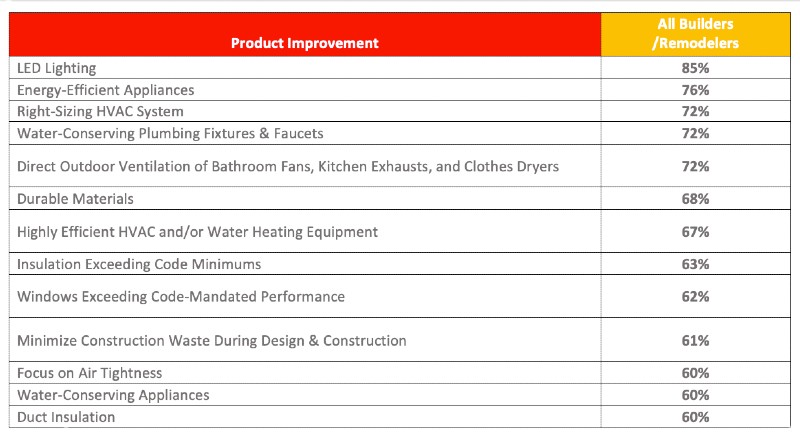
Now Comes the Bill
According to the NAHB, single-family builders believe the homebuyer will pay more for green, healthy solutions if the trinity of efficiency, wellness, and comfort can be realized.
- Efficiency: 84% look for lower operating costs.
- Comfort: 52% want greater comfort and occupant experience.
- Wellness: 43% seek improved health and well-being.
To best understand a homebuyer’s motivations, it is important to know the stage of the buyer’s lifecycle. The NAHB data suggests that first-time buyers are more focused on lower operating costs. Home buyers with children will elevate wellness as a key criterion.
Marketers must develop specific value propositions for each type of buyer to best convince them to build green and realize a healthy home.
CONNECT WITH US
Let’s talk.
Have a specific marketing challenge? Looking for a new agency?
We’d love to hear from you.
